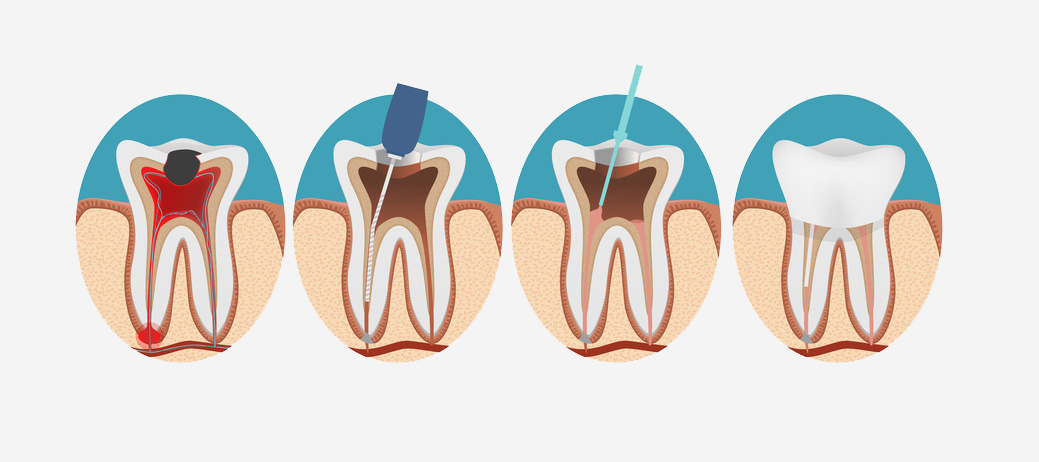
Root canal treatment (endodontics)
Frequently asked questions (FAQ).
What is endodontic (root canal) treatment?
Endodontic treatment addresses the dental pulp — richly innervated and vascularised tissue that nourishes the tooth and provides sensation. Deep caries, leaking fillings, trauma or occlusal overload may cause pulp inflammation and severe pain. Management is either conservative (pulp preservation) or, in advanced disease, removal of the inflamed pulp tissue.
What are the symptoms of pulp disease?
- tooth pain to the touch,
- hypersensitivity to cold or heat,
- tooth discolouration,
- enlargement of the lymph nodes,
- pain in the gums and tissues adjacent to the tooth
What does root canal (endodontic) treatment involve?.
After the medical interview, the dentist performs examinations necessary for diagnosis: visual inspection (cavities, fillings, gum appearance, tooth colour), clinical tests (tenderness to percussion), pulp testing (response to cold), and X-rays or review of previous images.
The choice of endodontic treatment depends on the extent of disease in dentine, pulp and periapical tissues.
The procedure is performed under local anaesthesia. The root canals are prepared chemically and mechanically to remove diseased tissue, disinfected and shaped for filling. The canals are then tightly filled with gutta-percha.
Finally, the tooth is restored with a light-cured filling or a post and core followed by a crown. X-rays are taken as needed.
What are the advantages of endodontic treatment?
The great advantage of endodontic treatment is saving the tooth and maintaining its function for many years. Although complex, it is worth taking the chance to preserve the tooth.
If treatment is delayed, inflammation may spread, and the tooth may be lost. Missing teeth are not just an aesthetic issue — neighbouring teeth drift, and even a single missing tooth can cause malocclusion and bone loss.
When is endodontic retreatment needed?
Endodontic retreatment is more complex than primary treatment. It is indicated when a root-treated tooth remains symptomatic, canals are short-filled, or periapical lesions fail to heal.
It involves removing the existing canal material, thorough re-preparation and a new, tight filling.
When is a fibre post used to rebuild a tooth?
Teeth after root canal treatment are weakened due to significant tissue loss from caries, trauma or access preparation. For a durable restoration, a fibre post is often cemented first to reinforce the tooth.
Why are X-rays needed during root canal treatment?
X-rays are an essential part of root canal therapy. They show the bone around the roots and the number, course, width and curvature of canals, and help verify the quality of the final filling.
Images also help assess whether periapical lesions are healing or progressing and if surgical treatment is required.
Caries can be detected on X-rays, including lesions not visible clinically (e.g. interproximal). They are used to assess restoration margins and to diagnose fractures and resorption.